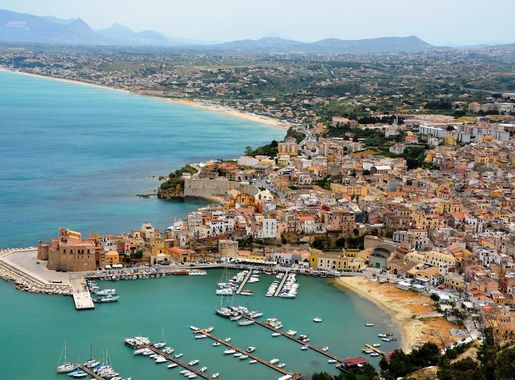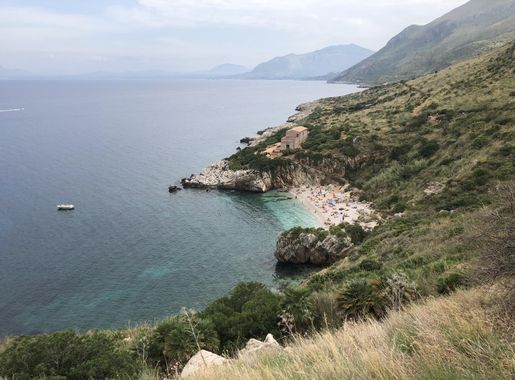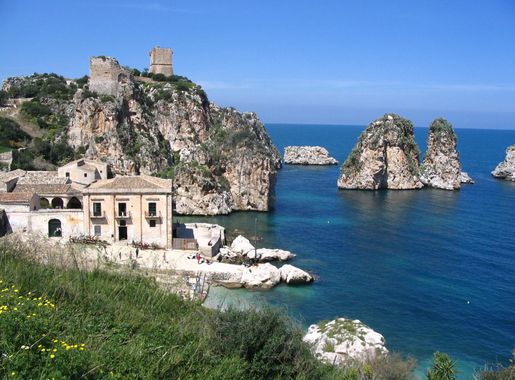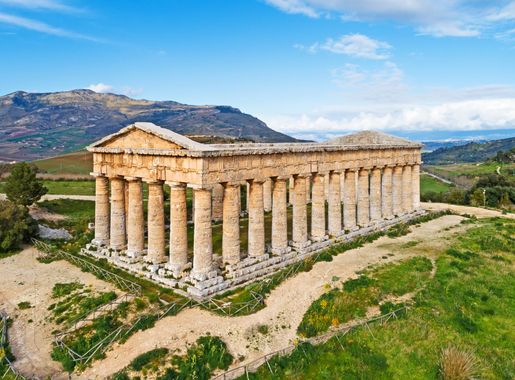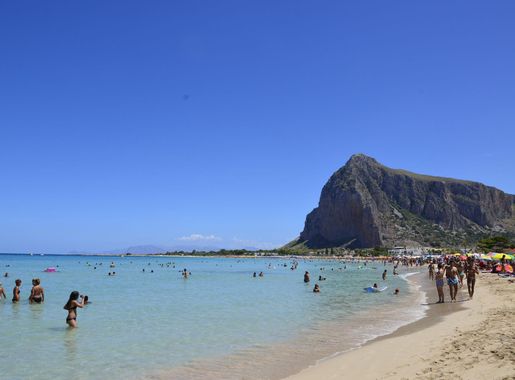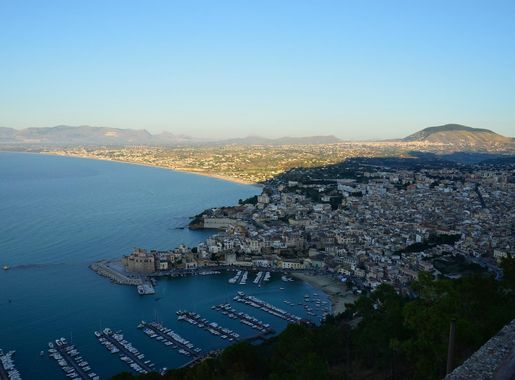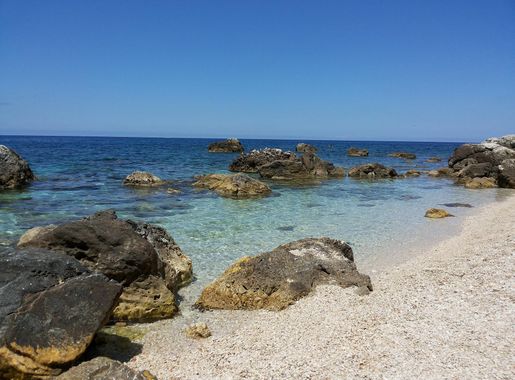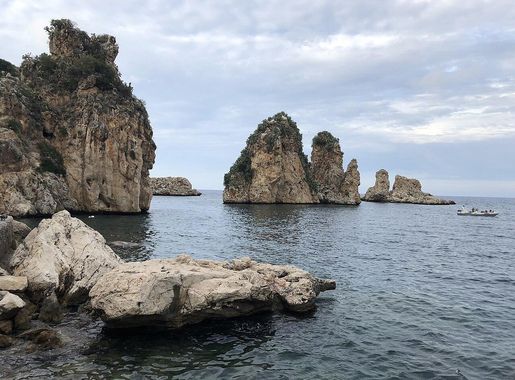
Castellammare: The Heartbeat of Palermo's Historic Charm
Discover Castellammare in Palermo – a vibrant blend of history, culture, and authentic Sicilian charm, featuring bustling markets, historic landmarks, and scenic coastal views.
Nestled in the vibrant city of Palermo, Castellammare is a treasure trove of history, culture, and authentic Italian experiences. This neighborhood, with its narrow, winding streets and historic buildings, offers a glimpse into the soul of Sicily. As you wander through Castellammare, you'll be greeted by the sight of stunning Baroque churches, bustling markets, and charming piazzas that transport you back in time. One of the highlights of Castellammare is the Vucciria Market, a lively marketplace where you can sample delicious Sicilian street food, fresh produce, and local crafts. The market is a sensory delight, with its colorful stalls, aromatic spices, and the sounds of vendors calling out to passersby. It's the perfect place to immerse yourself in the local culture and pick up some unique souvenirs. Castellammare is also home to several historical landmarks, including the majestic Oratorio di San Lorenzo and the beautiful Chiesa di San Domenico. These architectural gems showcase the rich artistic heritage of Palermo and are must-visit sites for history enthusiasts. As you explore the neighborhood, you'll also discover hidden courtyards, quaint cafes, and artisan shops that add to its charm. For those interested in Palermo's maritime history, a visit to the nearby Port of Palermo is a must. The port area offers stunning views of the Mediterranean Sea and is a great spot for a leisurely stroll or a boat tour. Whether you're a history buff, a foodie, or simply looking to soak up the local atmosphere, Castellammare has something to offer every traveler.
Local tips in Castellammare
- Visit the Vucciria Market early in the morning to experience its full vibrancy and to avoid the crowds.
- Wear comfortable walking shoes, as the neighborhood's cobblestone streets can be uneven.
- Take a guided tour of the Oratorio di San Lorenzo to fully appreciate its stunning stucco work and historical significance.
- Try the panelle and crocchè, traditional Sicilian street foods, at one of the local market stalls.
- Bring a camera to capture the picturesque views of the Port of Palermo, especially during sunset.
Castellammare: The Heartbeat of Palermo's Historic Charm
Nestled in the vibrant city of Palermo, Castellammare is a treasure trove of history, culture, and authentic Italian experiences. This neighborhood, with its narrow, winding streets and historic buildings, offers a glimpse into the soul of Sicily. As you wander through Castellammare, you'll be greeted by the sight of stunning Baroque churches, bustling markets, and charming piazzas that transport you back in time. One of the highlights of Castellammare is the Vucciria Market, a lively marketplace where you can sample delicious Sicilian street food, fresh produce, and local crafts. The market is a sensory delight, with its colorful stalls, aromatic spices, and the sounds of vendors calling out to passersby. It's the perfect place to immerse yourself in the local culture and pick up some unique souvenirs. Castellammare is also home to several historical landmarks, including the majestic Oratorio di San Lorenzo and the beautiful Chiesa di San Domenico. These architectural gems showcase the rich artistic heritage of Palermo and are must-visit sites for history enthusiasts. As you explore the neighborhood, you'll also discover hidden courtyards, quaint cafes, and artisan shops that add to its charm. For those interested in Palermo's maritime history, a visit to the nearby Port of Palermo is a must. The port area offers stunning views of the Mediterranean Sea and is a great spot for a leisurely stroll or a boat tour. Whether you're a history buff, a foodie, or simply looking to soak up the local atmosphere, Castellammare has something to offer every traveler.
Iconic landmarks you can’t miss
Quattro Canti
Explore Quattro Canti, a stunning baroque square in Palermo, where history, architecture, and vibrant local culture converge in a captivating atmosphere.
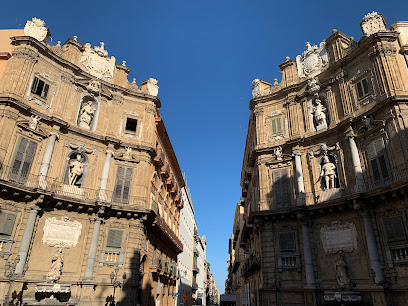
Belvedere Castellammare del Golfo
Discover the stunning views and serene atmosphere at Belvedere Castellammare del Golfo, a must-visit scenic spot in Sicily.
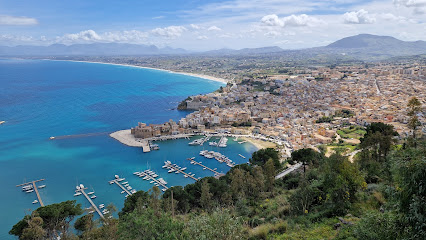
Zisa Palace
Experience the architectural splendor of Zisa Palace, a historic gem in Palermo, where Norman royalty once thrived amidst stunning gardens.
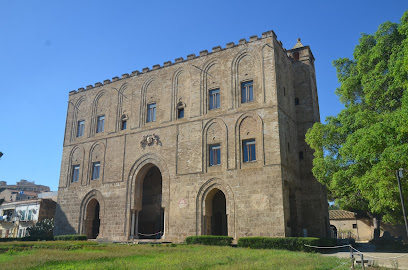
Palazzo Conte Federico - Museum
Explore the rich history of Sicily at Palazzo Conte Federico, a captivating museum showcasing the grandeur of Palermo's noble heritage.
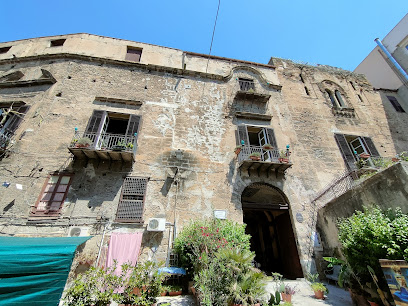
Castello a Mare
Explore the historical legacy of Castello a Mare in Palermo, a captivating landmark that unveils the rich stories of Sicily's past amidst stunning coastal views.
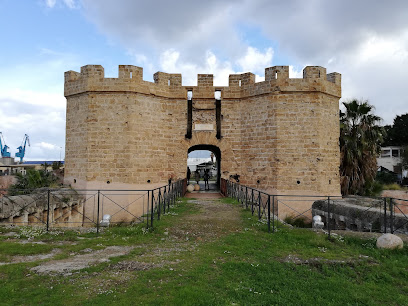
Colonna dell’Immacolata
Explore the stunning Colonna dell'Immacolata in Palermo, a splendid Baroque column symbolizing faith and a vibrant cultural hub.
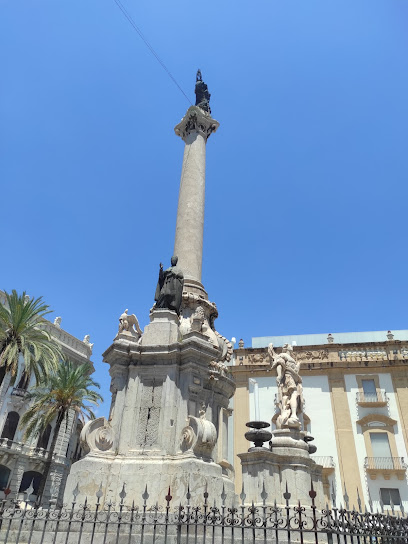
Palazzo Costantino
Discover the rich history and stunning Baroque architecture of Palazzo Costantino, a must-visit landmark in Palermo, Italy.
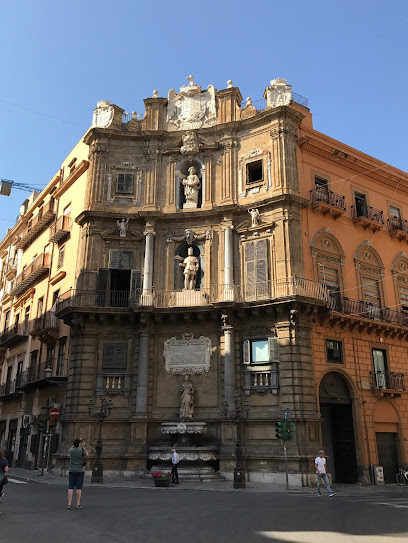
Monumento ai Caduti nella Lotta contro la Mafia
Explore the Monumento ai Caduti nella Lotta contro la Mafia, a powerful symbol of courage and resilience in the heart of Palermo, Italy.
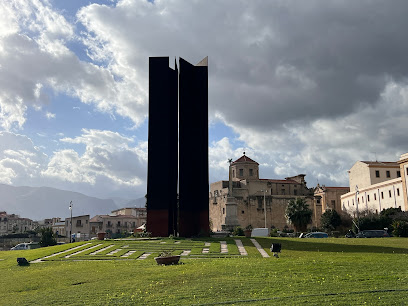
Genio del Garraffo o Palermo lu Grandi
Explore the historical significance of Genio del Garraffo, a captivating landmark that showcases Palermo's rich cultural heritage and architectural beauty.
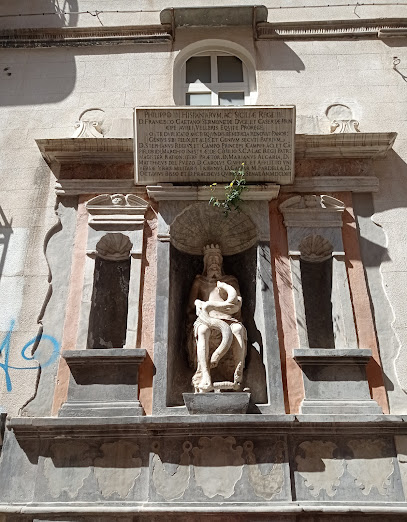
Monumento ai caduti del mare
Discover the poignant beauty of the Monumento ai caduti del mare in Castellammare del Golfo, a heartfelt tribute to maritime heroes surrounded by stunning scenery.
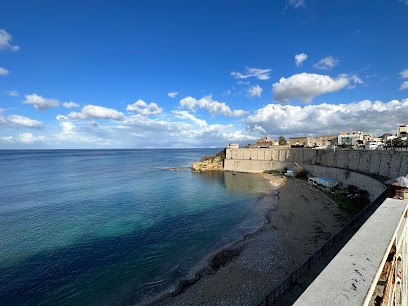
Unmissable attractions to see
Palermo Cathedral
Discover the architectural splendor and rich history of Palermo Cathedral, a must-visit landmark in Sicily, blending multiple styles and centuries of heritage.

Palazzo Abatellis
Discover the artistic treasures and stunning architecture of Palazzo Abatellis, a must-visit museum in Palermo, Italy.
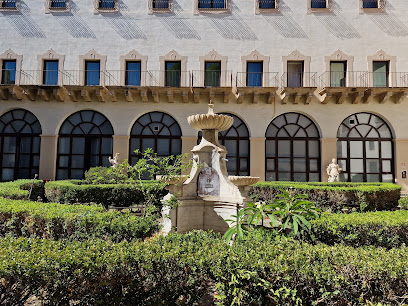
Palazzo Chiaramonte Steri
Explore the architectural wonder of Palazzo Chiaramonte Steri, a historical landmark in Palermo that showcases Sicilian culture and heritage.
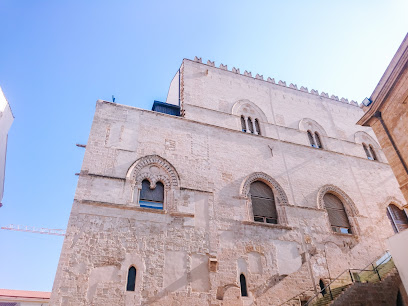
Fountain Garraffello
Explore the enchanting Fountain Garraffello in Palermo, a historical landmark that embodies the city's rich cultural heritage and artistic beauty.
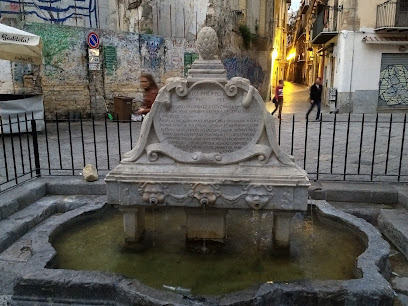
Il Palazzo Alliata di Pietratagliata
Explore the majestic Il Palazzo Alliata di Pietratagliata, a historical gem in Palermo, showcasing Sicilian nobility and architectural wonders.
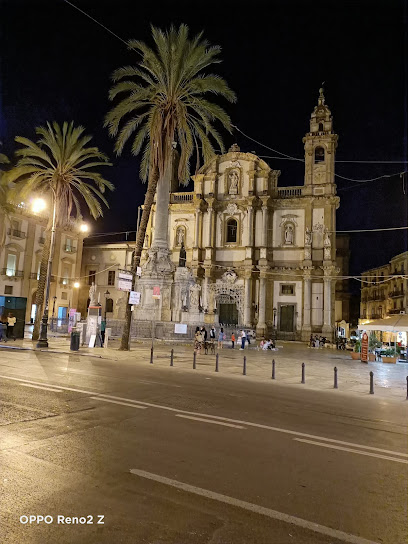
ApeBianca
Discover the charm of Palermo at ApeBianca, a unique tourist attraction offering authentic Sicilian experiences in a serene and vibrant setting.

Genie of Palermo
Explore the Genie of Palermo, a charming tourist attraction rich in history, culture, and authentic Sicilian flavors, perfect for every traveler.
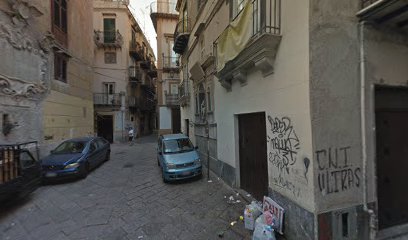
Essential places to dine
Taverna Dei Canti
Experience authentic Sicilian flavors at Taverna Dei Canti in Palermo - where tradition meets taste in every dish.
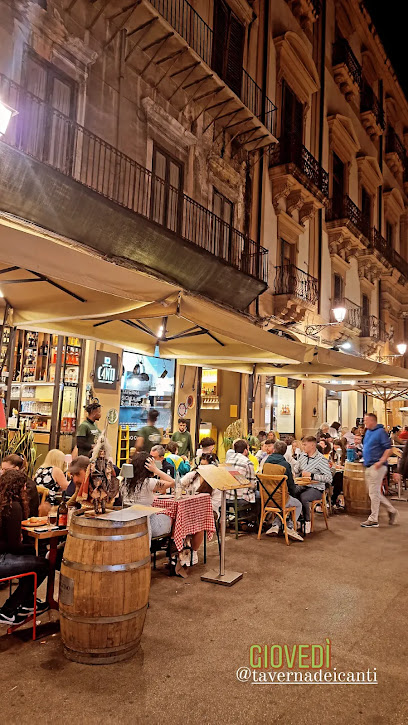
Trattoria Al Ferro di Cavallo
Experience authentic Sicilian cuisine at Trattoria Al Ferro di Cavallo – where every dish tells a story.

Il Cambusone
Experience authentic Sicilian seafood at Il Cambusone in Palermo – where tradition meets exquisite flavors.
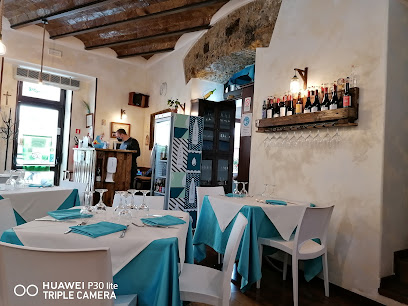
Osteria Al Casareccio
Experience authentic Italian flavors at Osteria Al Casareccio in Palermo – where every meal tells a story.
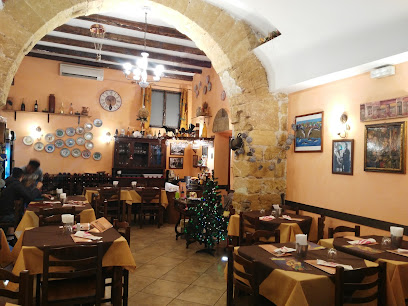
Calamida
Discover authentic Southern Italian flavors at Calamida in Palermo – where every dish is a celebration of local culinary heritage.
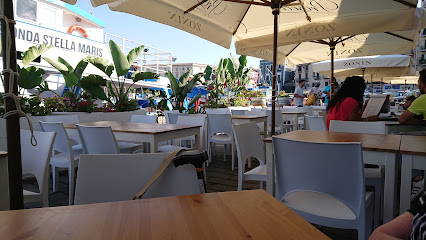
Ristorante Castello a Mare
Experience exquisite Sicilian cuisine at Ristorante Castello a Mare, where stunning views meet culinary excellence in Palermo.
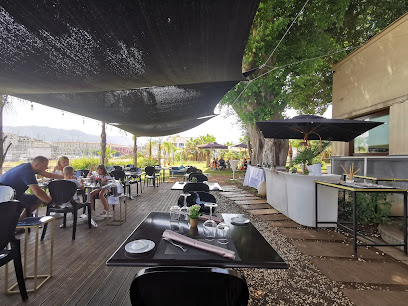
Ristorante Palazzo Branciforte
Experience authentic Sicilian cuisine at Ristorante Palazzo Branciforte, where every dish tells a story of Italy's rich culinary heritage.
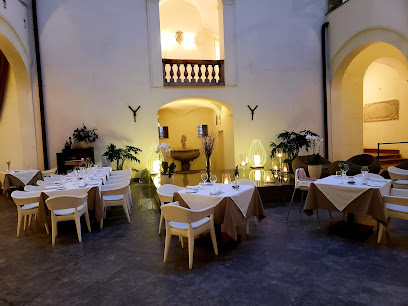
Il Maestro del Brodo da Bartolo & Sons
Experience authentic Sicilian seafood at Il Maestro del Brodo da Bartolo & Sons – where tradition meets flavor in every dish.

Osteria Pantelleria
Experience authentic Sicilian cuisine at Osteria Pantelleria in Palermo – where tradition meets flavor in every dish.

All'Olivella Wine'n'Dine
Experience authentic Sicilian dining at All'Olivella Wine'n'Dine in Palermo – where every dish tells a story.
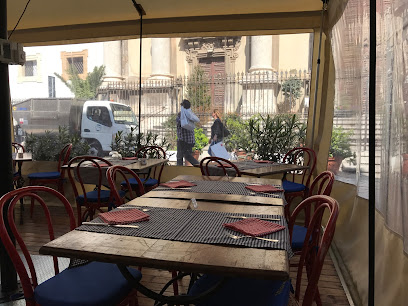
Markets, malls and hidden boutiques
Centro Commerciale Forum Palermo
Explore the vibrant Centro Commerciale Forum Palermo, a premier shopping destination with diverse stores, dining options, and entertainment in the heart of the city.
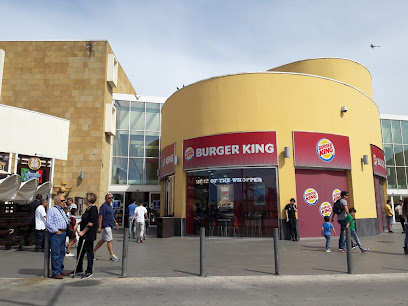
Magazzini Anita
Explore the charm of vintage fashion at Magazzini Anita, Palermo's go-to destination for unique and high-quality clothing pieces.
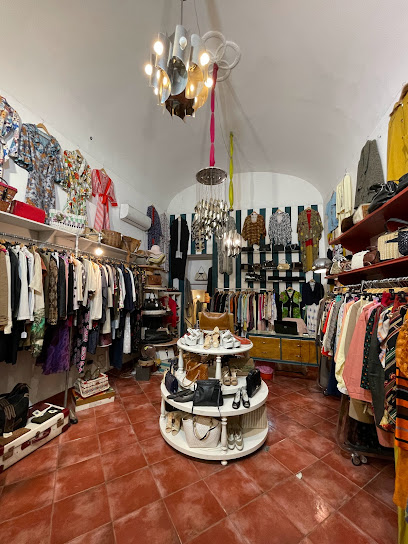
Melania Caruso boutique
Explore Melania Caruso Boutique in Palermo for exclusive women's fashion, shoes, and accessories reflecting Italian elegance and style.
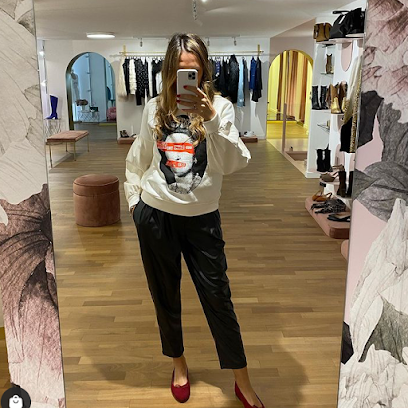
Colori del Sole Palermo - Marina
Explore the vibrant craft store in Palermo, Colori del Sole, offering unique fabrics and souvenirs that celebrate Sicilian culture.

CutieCuticchi
Explore the vibrant artistry of Sicily at CutieCuticchi, your destination for unique handicrafts, paintings, and unforgettable souvenirs.

Souvenirs
Discover the essence of Sicilian craftsmanship at Souvenirs, a must-visit craft store in Palermo for unique and authentic souvenirs.
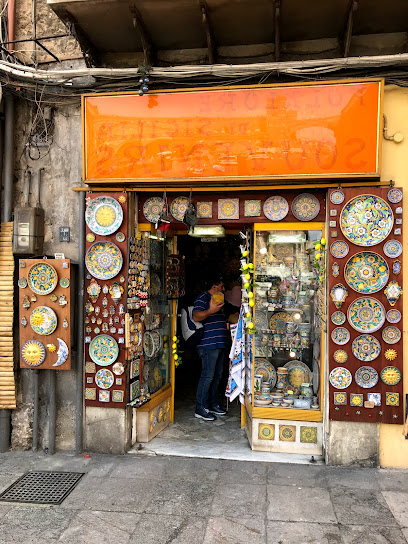
À Putia
Explore À Putia, a charming gift shop in Palermo offering unique Sicilian crafts and gourmet treats that capture the heart of Sicily.
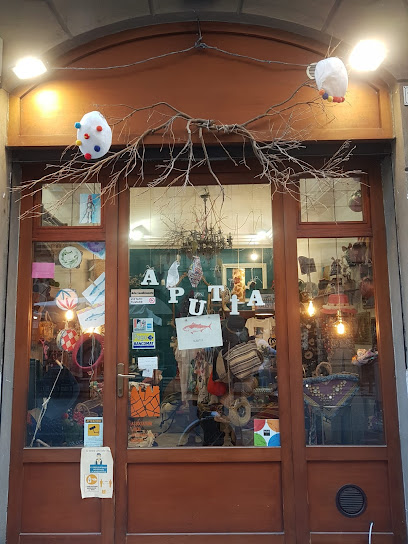
Shajid Store
Discover unique souvenirs and local treasures at Shajid Store, the premier gift shop in the heart of Palermo.
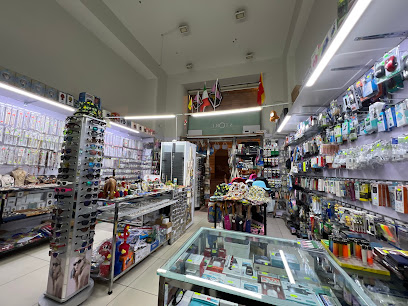
Unique Store del Gruppo Mineo & Mineo
Explore Unique Store del Gruppo Mineo & Mineo in Palermo, where stylish eyewear meets expert care for a perfect vision experience.
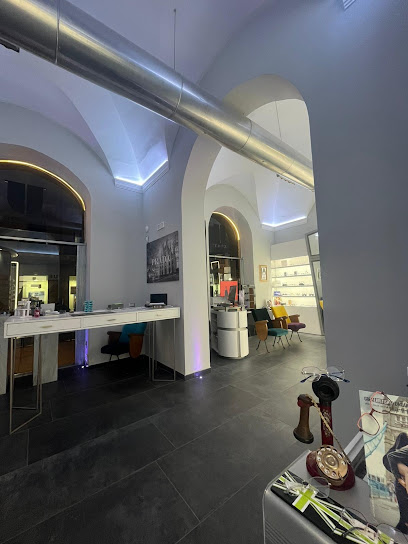
MANGANO
Discover MANGANO in Palermo for exquisite clothing and a taste of local fashion that reflects the vibrant culture of Sicily.
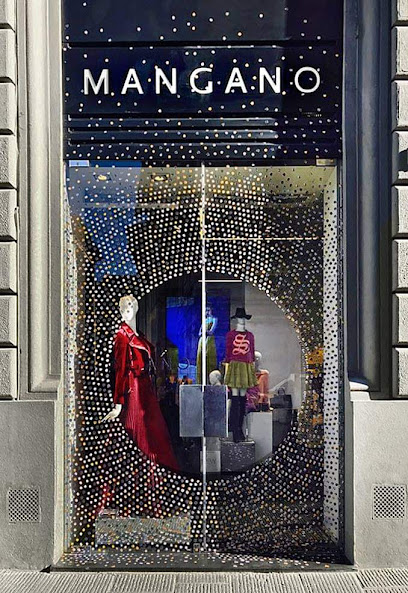
Essential bars & hidden hideouts
Bottiglieria Massimo -Champagneria since 1968
Discover Bottiglieria Massimo in Palermo: A historic wine bar offering a delightful selection of wines, cocktails, and delicious sandwiches since 1968.

Finch Pub
Discover the vibrant nightlife of Palermo at Finch Pub, a perfect blend of local charm and international drinks.
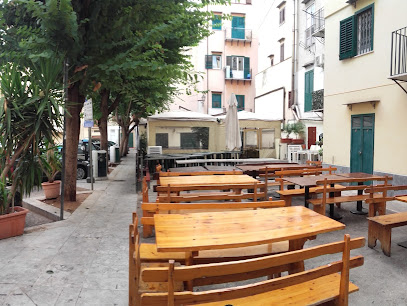
Bottega Monteleone
Discover the flavors of Sicily at Bottega Monteleone, a premier wine bar in Palermo offering organic wines and delectable small plates in a vibrant atmosphere.
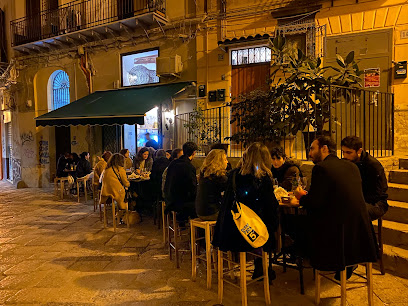
Bottiglieria Vinuccio
Experience the vibrant wine culture of Palermo at Bottiglieria Vinuccio, where exquisite wines and live music create unforgettable moments.
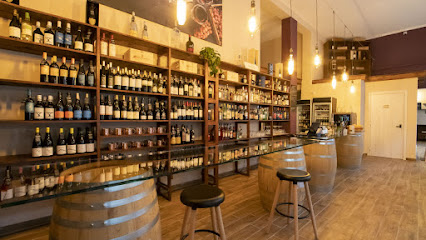
City Lounge Bar
Discover the vibrant flavors of Bulgaria at City Lounge Bar in Palermo, where exquisite wines and delightful dishes create an unforgettable experience.
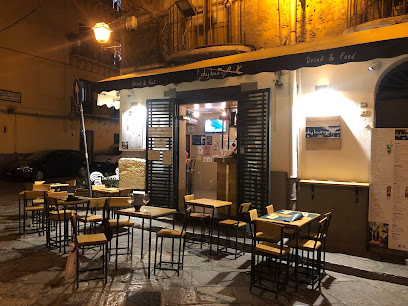
Corso Vittorio 113
Discover the perfect blend of exquisite wines and artisanal coffee at Corso Vittorio 113, a must-visit spot in Palermo's vibrant culture.
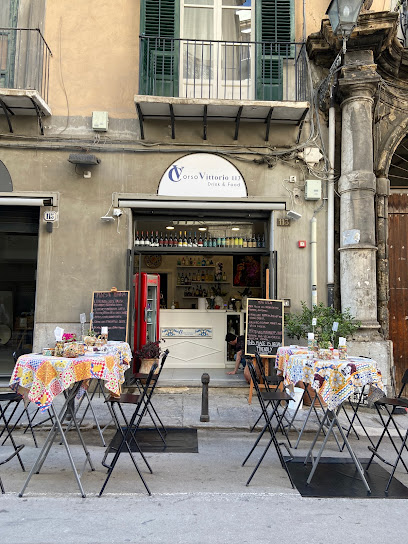
Finch Lounge
Discover the lively Finch Lounge in Palermo, where exquisite sushi meets a vibrant nightlife, making it a top destination for socializing and relaxation.
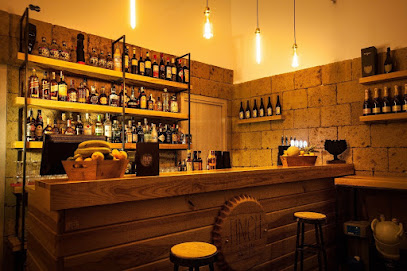
Calamuri Lounge Bar
Immerse yourself in Palermo's nightlife at Calamuri Lounge Bar, where innovative cocktails and a vibrant atmosphere await every visitor.
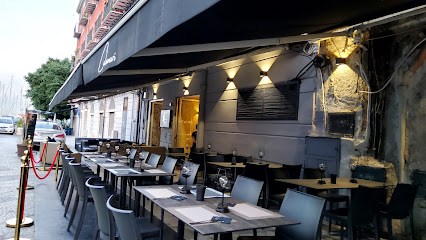
Taverna Pirtusiddu
Experience the vibrant nightlife of Palermo at Taverna Pirtusiddu, where exquisite cocktails and local wines await in a lively ambiance.
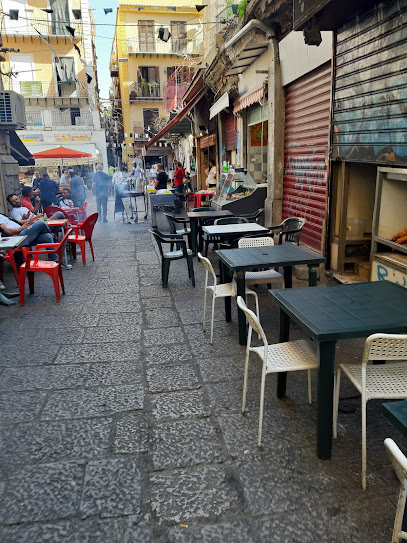
Balordi
Discover Balordi, the lively pub in Palermo, offering a unique blend of local flavors, vibrant atmosphere, and unforgettable nightlife experiences.
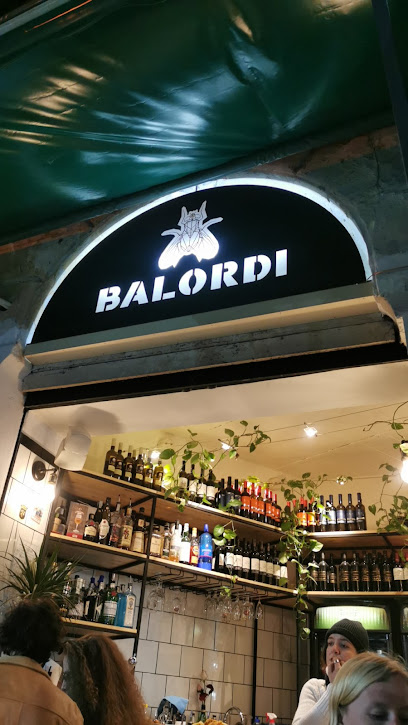
Local Phrases
-
- HelloCiao
[chow] - GoodbyeArrivederci
[ah-ree-veh-DEHR-chee] - YesSì
[see] - NoNo
[noh] - Please/You're welcomePer favore/Prego
[pehr fah-VOH-reh / PREH-goh] - Thank youGrazie
[GRAH-tsyeh] - Excuse me/SorryMi scusi/Scusa
[mee SKOO-zee / SKOO-zah] - How are you?Come stai?
[KOH-meh stah-ee?] - Fine. And you?Bene. E tu?
[BEH-neh. eh too?] - Do you speak English?Parli inglese?
[PAHR-lee een-GLEH-zeh?] - I don't understandNon capisco
[nohn kah-PEES-koh]
- HelloCiao
-
- I'd like to see the menu, pleaseVorrei vedere il menu, per favore
[vohr-RAY veh-DEH-reh eel MEH-noo, pehr fah-VOH-reh] - I don't eat meatNon mangio carne
[nohn MAHN-djoh KAR-neh] - Cheers!Salute!
[sah-LOO-teh] - I would like to pay, pleaseVorrei pagare, per favore
[vohr-RAY pah-GAH-reh, pehr fah-VOH-reh]
- I'd like to see the menu, pleaseVorrei vedere il menu, per favore
-
- Help!Aiuto!
[ah-YOO-toh] - Go away!Vai via!
[vah-ee VYAH] - Call the Police!Chiama la polizia!
[KYAH-mah lah poh-LEE-tsya] - Call a doctor!Chiama un dottore!
[KYAH-mah oon doh-TOH-reh] - I'm lostMi sono perso
[mee SOH-noh PEHR-soh] - I'm illSto male
[stoh MAH-leh]
- Help!Aiuto!
-
- I'd like to buy...Vorrei comprare...
[vohr-RAY kohm-PRAR-eh...] - I'm just lookingSto solo guardando
[stoh SOH-loh gwahr-DAHN-doh] - How much is it?Quanto costa?
[KWAHN-toh KOH-stah?] - That's too expensiveÈ troppo costoso
[eh TROH-poh koh-STOH-soh] - Can you lower the price?Puoi abbassare il prezzo?
[PWAW-ee ahb-bah-SAH-reh eel PREHT-zoh?]
- I'd like to buy...Vorrei comprare...
-
- What time is it?Che ora è?
[keh OH-rah eh?] - It's one o'clockÈ l'una
[eh LOO-nah] - Half past (10)Sono le dieci e mezza
[SOH-noh leh DYEH-chee eh MEHT-tsah] - MorningMattina
[maht-TEE-nah] - AfternoonPomeriggio
[poh-meh-REED-joh] - EveningSera
[SEH-rah] - YesterdayIeri
[YEH-ree] - TodayOggi
[OH-jee] - TomorrowDomani
[doh-MAH-nee] - 1Uno
[OO-noh] - 2Due
[DOO-eh] - 3Tre
[TREH] - 4Quattro
[KWAH-troh] - 5Cinque
[CHEEN-kweh] - 6Sei
[say] - 7Sette
[SEH-teh] - 8Otto
[OH-ttoh] - 9Nove
[NOH-veh] - 10Dieci
[DYEH-chee]
- What time is it?Che ora è?
-
- Where's a/the...?Dov'è un/il...?
[doh-VEH oon/eel] - What's the address?Qual è l'indirizzo?
[kwahl eh leen-dee-REET-tsaw?] - Can you show me (on the map)?Puoi mostrarmi (sulla mappa)?
[PWAW-ee moh-STRAHR-mee (SOOL-lah MAHP-pah)?] - When's the next (bus)?Quando passa il prossimo (autobus)?
[KWAHN-doh PAHS-sah eel PROHS-soh (ow-TOH-boos)?] - A ticket (to ....)Un biglietto (per ....)
[oon beel-LYEH-toh (pehr ....)]
- Where's a/the...?Dov'è un/il...?
History of Castellammare
-
Castellammare's history begins in the Arab period of Sicily, when it was known as 'Qasṭall al-Bahr', meaning 'Castle by the Sea'. This strategic coastal location was pivotal for trade and defense, leading to the establishment of a castle that served as a lookout point and a stronghold against maritime threats.
-
During the 15th and 16th centuries, Castellammare became a refuge for fishermen and traders, thriving under Spanish rule. The construction of the imposing 'Castello a Mare', a fortress built to protect the port, signified the importance of this area in maritime commerce and the defense of Palermo. This period also saw the rise of a vibrant local community centered around fishing and trade.
-
The 19th century was a transformative era for Castellammare, as Palermo underwent significant urban expansion. The introduction of the railway and the industrial revolution led to increased economic activity. The neighbourhood became known for its shipyards, contributing to the shipbuilding industry that was essential for Palermo's maritime economy.
-
Throughout its history, Castellammare has been a melting pot of cultures. The legacy of the Arab, Norman, and Spanish influences is evident in the architecture, cuisine, and traditions of the neighbourhood. Local markets, such as the historic 'Mercato del Capo', reflect this rich cultural tapestry, offering a glimpse into the daily life and culinary practices of its diverse residents.
-
In recent years, Castellammare has seen a revival as Palermo embraces its historical heritage. Efforts to restore historical buildings and promote tourism have revitalized the neighbourhood, attracting visitors to its picturesque streets, vibrant markets, and the stunning views of the Mediterranean. Cultural events and festivals highlight the unique traditions and community spirit of Castellammare.
Castellammare Essentials
-
Castellammare is centrally located in Palermo, making it easily accessible from other neighborhoods. From Politeama, you can take a short walk or catch a bus (lines 101, 102) that will take you directly to the heart of Castellammare. The nearest train station is Palermo Centrale, from where you can take a local bus or a taxi to reach Castellammare, which is about a 15-minute drive.
-
Castellammare is best explored on foot due to its compact size and narrow streets. Public buses (AMAT) operate throughout the area, connecting Castellammare to other parts of Palermo. Taxis are also available but be sure to use official taxi ranks. Bicycle rentals are limited, but some local shops offer bikes for hire, allowing for a leisurely ride along the waterfront.
-
Castellammare is generally safe for tourists, but it's wise to stay vigilant, especially in crowded areas. Avoid dimly lit streets at night and be cautious around the harbor area, where petty crimes such as pickpocketing can occur. Areas to exercise more caution include the back streets off Via Maqueda, particularly after dark.
-
In case of emergency, dial 112 for police, fire, or medical assistance. The nearest hospital is Ospedale Civico, located a short taxi ride away. Keep a list of emergency contacts and ensure you have travel insurance that covers medical emergencies. For minor ailments, local pharmacies can provide assistance.
-
Fashion: Do dress modestly when visiting churches; shorts and sleeveless tops are not appropriate. Religion: Do respect local customs; always be quiet and respectful in places of worship. Public Transport: Do give your seat to the elderly and pregnant women. Don't eat or drink on public transport. Greetings: Do greet locals with 'Buongiorno' during the day or 'Buonasera' in the evening. Eating & Drinking: Do try local street food like arancini and panelle, but don't drink alcohol in public places outside designated areas.
-
To experience Castellammare like a local, visit the bustling Mercato del Capo, where you can sample fresh produce and local delicacies. Spend time at the Foro Italico, especially in the evenings when locals gather for leisure and socializing. Don't miss the chance to enjoy a traditional Sicilian granita at a local café. Engaging in conversations with shop owners can provide you with unique insights into the neighborhood's history and culture.
Trending Landmarks in Castellammare
Nearby Cities to Castellammare
-
Things To Do in Catania
-
Things To Do in Taormina
-
Things To Do in Marsalforn
-
Things To Do in Xlendi
-
Things To Do in Xaghra
-
Things To Do in Gozo
-
Things To Do in Xewkija
-
Things To Do in Mellieha
-
Things To Do in Qawra
-
Things To Do in Bugibba
-
Things To Do in Mgarr
-
Things To Do in Hammamet
-
Things To Do in Mdina
-
Things To Do in Rabat
-
Things To Do in St. Julian's

